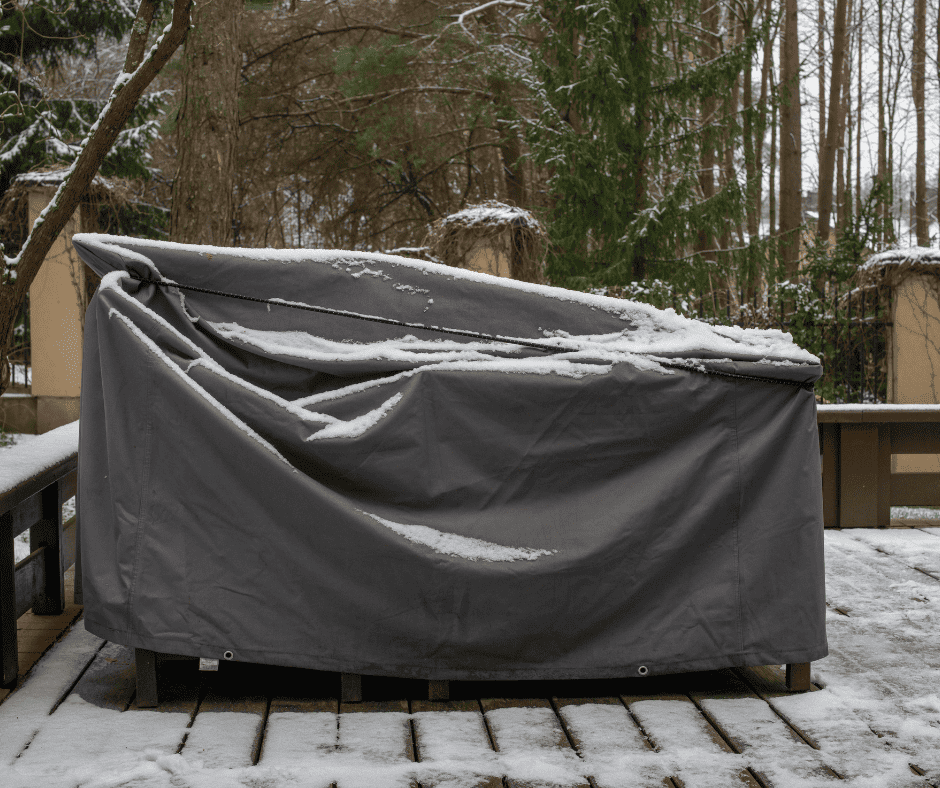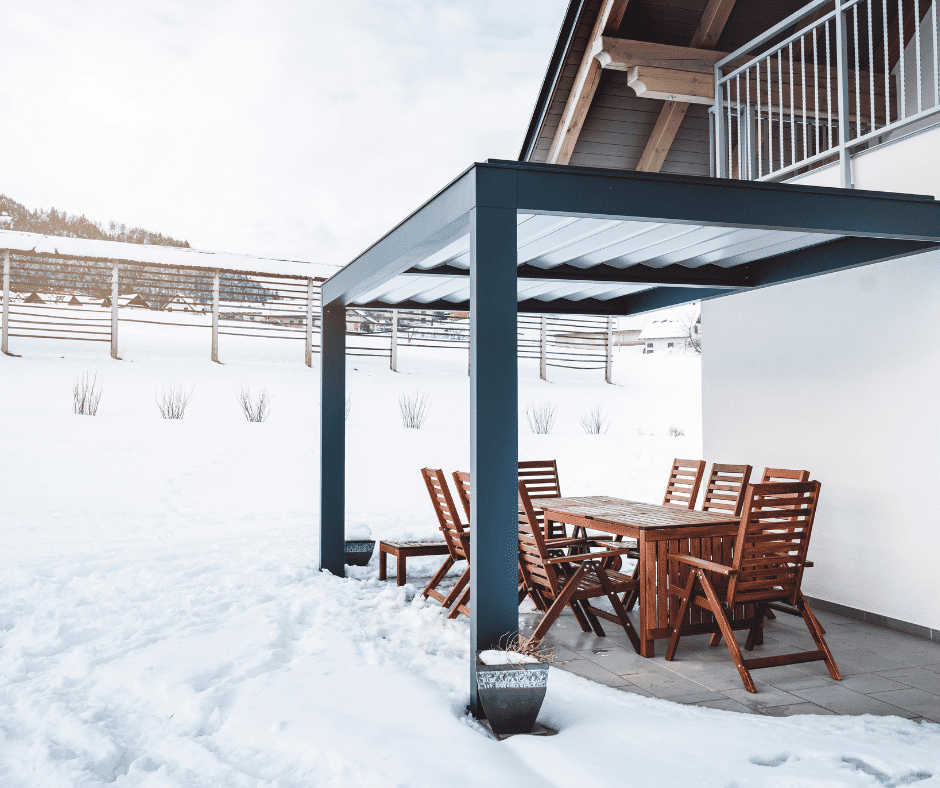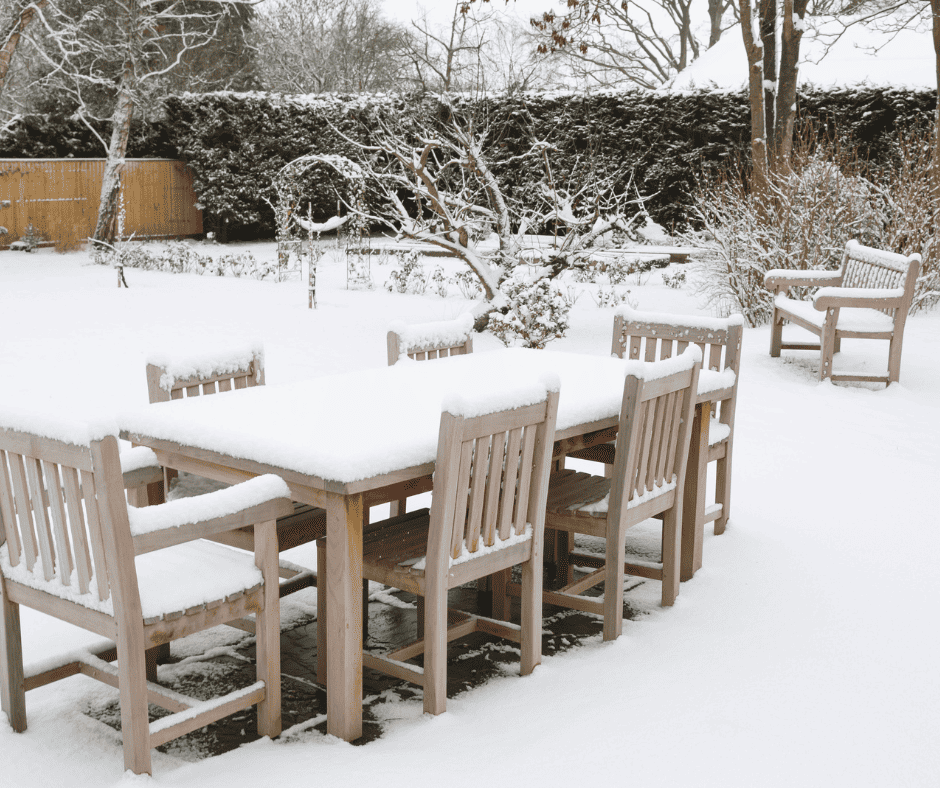Preparing your yard for winter looks different in every climate. In the Philadelphia region winters can be harsh, and maintenance is key to ensuring your yard doesn’t succumb to the elements.
As a homeowner, it is crucial to prepare your yard for the upcoming winter season to protect your property and ensure a smooth transition into spring. From clearing debris to winterizing your plants and irrigation system, there are several key steps to take to safeguard your yard during the Philadelphia winter.
In this guide, we will walk you through the essential tasks and tips to prepare your yard for winter, so you can enjoy a beautiful, thriving landscape once the snow melts away.

Assessing the winter needs of your yard
Assessing the winter needs of your yard is an important step in preparing for the upcoming Philadelphia winter. Every yard is unique and may require different levels of maintenance and protection during the colder months. Start by evaluating the condition of your plants, trees, and shrubs. Are they well-established or newly planted? Certain plants may require additional insulation or wrapping to protect them from harsh winds and freezing temperatures.
Next, take a look at your yard’s drainage system. Is it functioning properly? Clear any debris or leaves that may be blocking drains or gutters to prevent water buildup and potential damage. Additionally, consider the potential for snow accumulation in your yard. Do you have a plan for snow removal? Clearing walkways and driveways promptly will not only enhance safety but also prevent ice from forming.
Preparing your plants for the cold
Before the cold weather hits, it’s crucial to prepare your plants for the winter to ensure their survival and healthy growth come spring. Start by pruning any damaged or dead branches from your trees and shrubs. This not only enhances the appearance of your yard but also prevents potential hazards during winter storms.
Next, apply a layer of mulch around the base of your plants. This will help retain moisture and regulate the temperature of the soil, creating a protective barrier against freezing temperatures. Be sure to avoid piling mulch against the trunk of trees or shrubs, as this can lead to rot and disease.
For more delicate plants and flowers, consider providing extra insulation. This can be accomplished by wrapping them in burlap or using plant covers, which are available at most garden centers. Remember to remove the covers during mild winter days to allow for ventilation.

Protecting your lawn from frost and snow
Protecting your lawn from frost and snow is essential for maintaining its health and appearance during the winter months. One of the most important steps you can take is to avoid excessive foot traffic on the lawn, especially when it is frozen or covered in snow. Walking on a frozen lawn can cause damage to the grass blades and compact the soil, making it harder for the grass to grow in the spring.
Another way to protect your lawn is to avoid using de-icing salts or chemical ice melters. These products can be harmful to both your lawn and the environment. Instead, opt for alternative methods such as using sand or kitty litter to improve traction on icy surfaces.
In addition, it is important to keep your lawn clear of debris such as leaves and branches. The weight of the snow on top of this debris can smother the grass and lead to disease or decay. Regularly raking and removing debris will help your lawn breathe and maintain its health.
Winterizing your irrigation system
Winterizing your irrigation system is a crucial step in preparing your yard for the Philadelphia winter. Freezing temperatures can cause water in the irrigation lines to expand and potentially damage the system. To prevent any costly repairs, it’s essential to properly winterize your irrigation system.
Start by shutting off the main water supply to the system. This will prevent any water from entering the irrigation lines during freezing temperatures. Next, drain any water left in the system by opening all of the valves and letting the water flow out completely.
It’s also important to disconnect and drain any hoses or sprinkler heads. Store them in a dry place until the spring. Additionally, consider insulating any exposed pipes or valves to further protect them from freezing.

Preparing your hardscaping
As winter approaches, it’s important to take the necessary steps to prepare your hardscaping for the cold and harsh weather conditions ahead. Proper winter preparation will not only help protect your investment but also ensure that your hardscape features continue to enhance the beauty and functionality of your outdoor space for years to come. Here are some essential tips to get started:
1. Clean and inspect: Before winter settles in, give your hardscaping a good cleaning. Remove any debris, fallen leaves, or dirt accumulated over time. Use a pressure washer or a stiff brush to scrub away any stubborn grime or stains. Once clean, inspect your hardscape features, such as patios, pathways, retaining walls, and driveways, for any signs of damage or deterioration. Addressing any issues now will prevent them from worsening during freezing temperatures.
2. Seal or reseal: If your hardscaping is constructed of materials like concrete, stone, or brick, consider applying a sealant to protect it from potential freeze-thaw damage. Sealing your hardscape surfaces will help repel moisture and prevent the formation of cracks or crumbling. If you already have a sealant in place, assess its condition and reapply if necessary. Follow the manufacturer’s recommendations for the best results.
3. Address drainage concerns: Poor drainage can lead to water pooling or ice formation, which can be damaging to your hardscaping. Inspect your drainage systems, such as gutters, downspouts, and French drains, and ensure they are clear of debris. Consider incorporating additional drainage solutions like channel drains or permeable pavers to redirect water away from your hardscape surfaces. Adequate drainage will minimize the risk of water damage and prevent potential hazards caused by ice buildup.
4. Protect vulnerable elements: Some hardscape features may be more susceptible to winter damage, such as outdoor fireplaces, pergolas, or water features. Take precautions to protect these elements by covering them with waterproof and weather-resistant materials, such as tarps or specialized outdoor covers. Additionally, disconnect and drain water lines from any water features or fixtures to prevent freezing and potential pipe bursts.
If you’d like to learn more about how the cold weather affects masonry, check out this blog post.
Cleaning and storing your outdoor furniture and equipment
Another important step in preparing your yard for the Philadelphia winter is cleaning and storing your outdoor furniture and equipment. Harsh winter weather can cause damage to these items and shorten their lifespan if not properly taken care of.
Start by cleaning your furniture and equipment thoroughly. Remove any dirt, debris, or stains using appropriate cleaning solutions and tools. For wooden furniture, consider applying a protective sealant to prevent moisture damage. Cushions and fabrics should be washed or dry cleaned, then stored in a dry, indoor space.
Next, inspect your equipment such as lawn mowers, leaf blowers, and trimmers. Clean them, remove any debris, and check for any repairs or maintenance that may be needed. Drain fuel tanks and replace any worn-out parts.
To prevent damage from snow and ice, store your furniture and equipment in a garage, shed, or covered area. If space is limited, invest in weatherproof covers to provide additional protection.

Ensure a well-maintained yard throughout the winter season
In conclusion, taking the necessary steps to prepare your yard for a Philadelphia winter is crucial for the health and vibrancy of your plants and vegetation. By monitoring the weather forecast and making adjustments accordingly, you can protect your yard from frost damage and other potential hazards.
Remember to cover delicate plants with blankets or burlap and consider investing in plant covers or cloches for added protection. Keeping your yard well-maintained throughout the winter is also important. Regularly remove fallen branches and debris to prevent damage during storms, and avoid walking on frozen grass to prevent compaction.
By following these tips and staying vigilant, you can ensure that your yard not only survives the winter season, but thrives come springtime. So start preparing your yard now and enjoy a beautiful and healthy landscape all year round.
